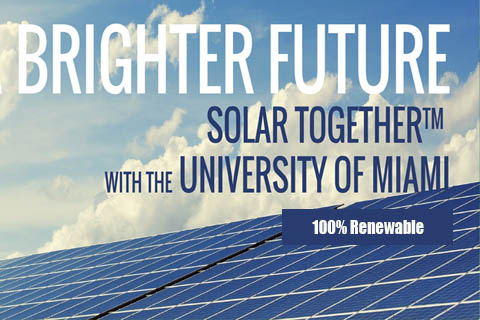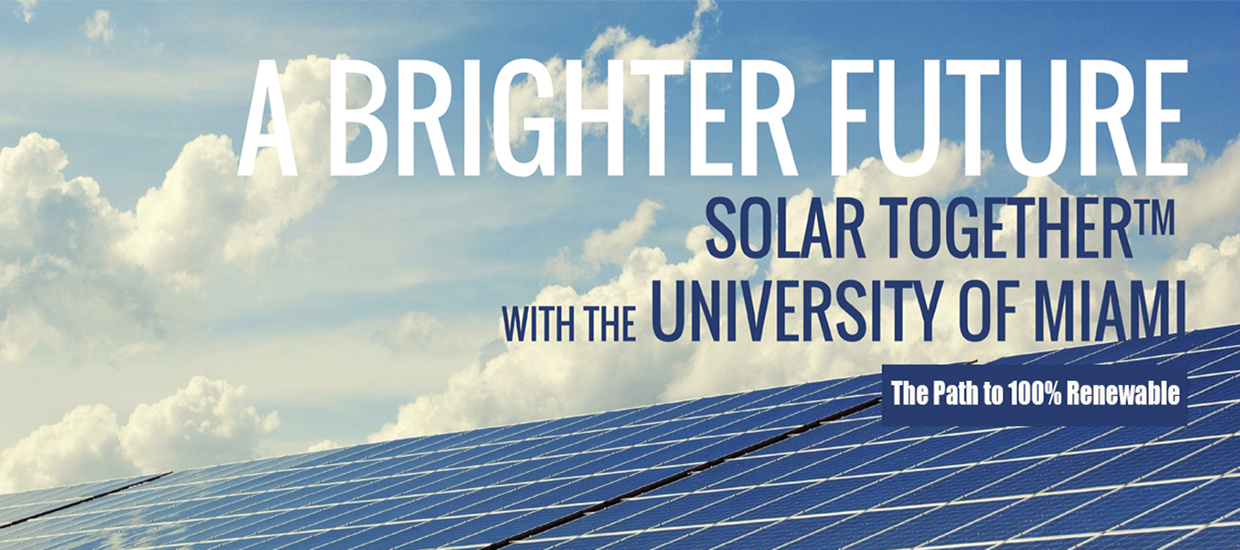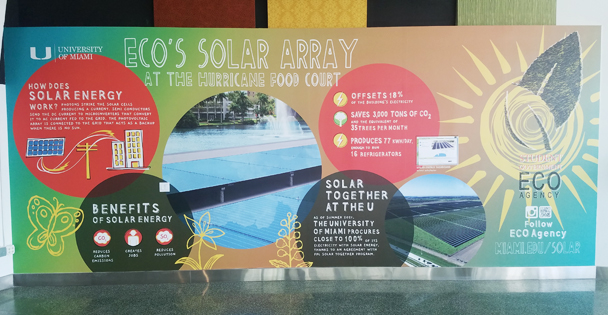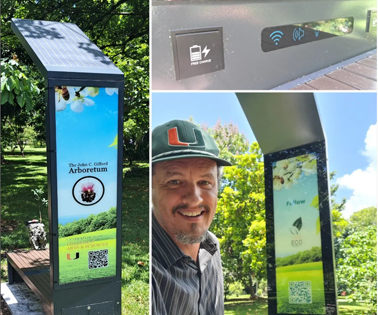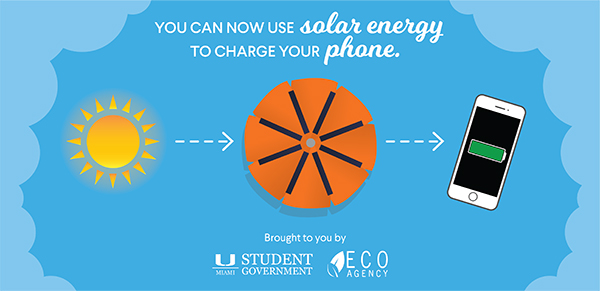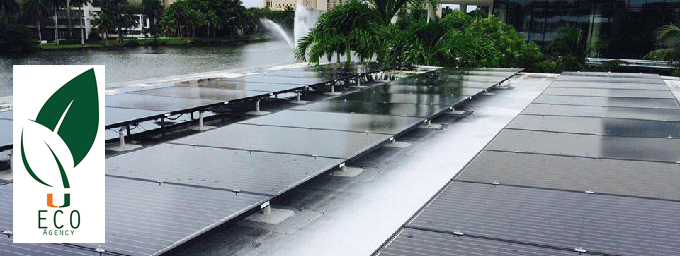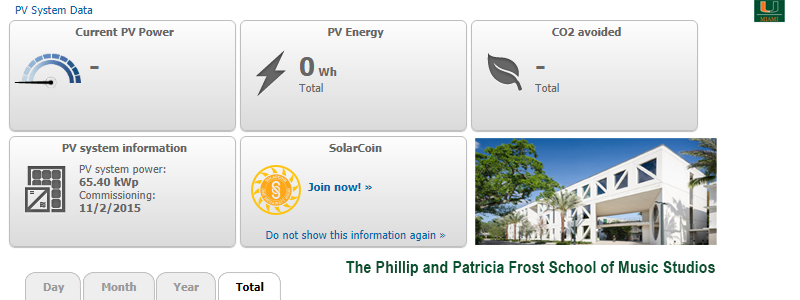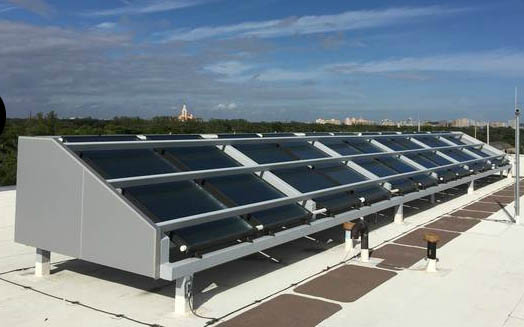The UC Pool is now heated and cooled with a Geothermal heat pump. Instead of using a traditional natural gas powered pump, the UC pool geothermal system uses the difference of temperatures between the surface and deep underground to provide heat or cool without burning any fossil fuel. It brings a lot of benefits and reduce considerably the carbon footprint of that area of campus.
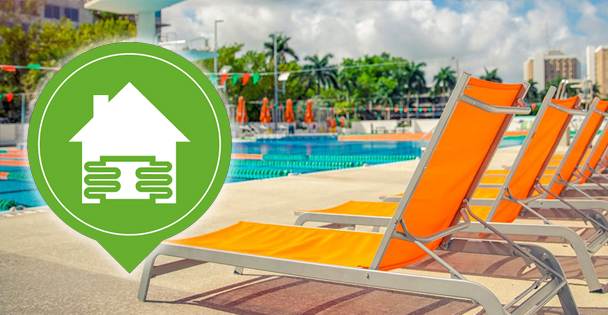
Data as of 01.2025:
- Total BTU demand per day = 27,835,994 (1,159,833 per hour)
- Total Symbiont System Capacity = 32,879,376 (1,369,974 per hour)
- Serviceable life comparison:
- Gas heaters have a 5-year serviceable life expectancy
- Air Source heaters have a 6-10-year serviceable life expectancy
- Geothermal heaters have a 15-20-year serviceable life expectancy
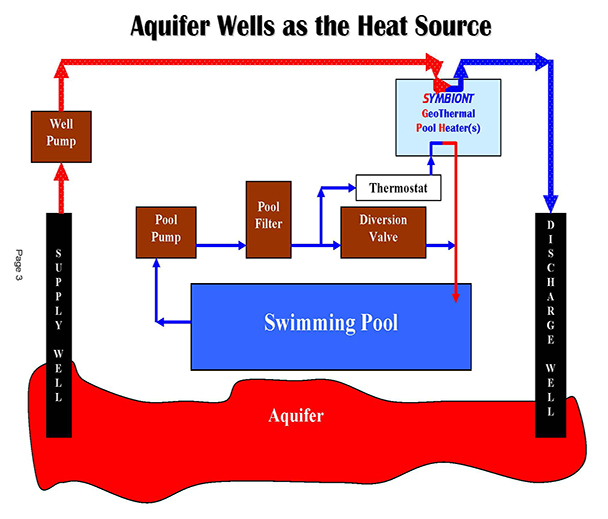
As illustrated above, pool water passes by the Thermostat and through the heater prior to returning to the pool. When the Thermostat senses the pool needs heat the system cycles on and the well pump begins to deliver water to the heater(s). The well water and pool water never mix. The Symbiont then transfers the heat stored in the well water to the pool water through a refrigerant cycle detailed in a separate diagram. The transfer of free heat in a water to water system (GeoThermal) is much more efficient than that of an air to water system (standard heat pumps) or a heat generated system (gas heater). Because the ground water remains a constant temperature throughout the year, the Symbiont GeoThermal system can exceed the performance of either the standard heat pumps or the gas heaters. When the pool has reached the desired temperature the heater(s) and well pump will cycle off.



